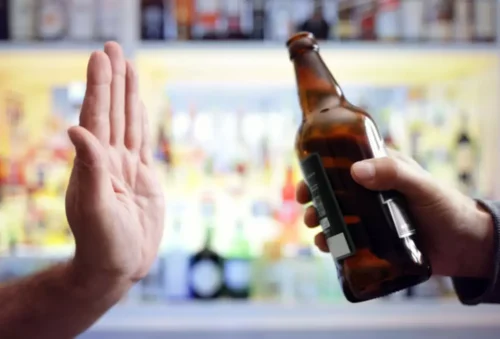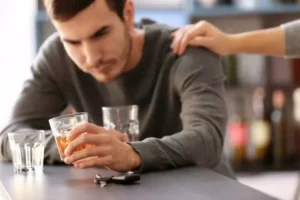A minority of patients withdrawing from stimulants may become significantly distressed or agitated, presenting a danger to themselves or others. Symptoms begin within 24 hours of last use of stimulants and last for 3-5 days. Some of these have approval in other countries, and some don’t have approval anywhere. Medical experts continue to debate the best way to taper these medications, so there’s no single agreed-upon approach. After a month or so, your brain gets used to sending off more neurotransmitters just so some can get past the benzodiazepine blockade. When benzodiazepines attach to your neurons, they invite a bunch of chloride ions inside.
2. Pharmacologic Management of Withdrawal Symptoms

The medication Romazicon (flumazenil) is sometimes used off-label for withdrawal symptoms. Longer-acting benzodiazepines like Klonopin (clonazepam) can stay in the system longer, which means it can be one to two days or even longer before withdrawal symptoms start. The primary difference between these drugs is the length of time they stay active in the body. However, benzodiazepines can cause physical dependence and withdrawal even when they are taken as directed. Benzodiazepines are a group of central nervous system depressants used to treat anxiety, insomnia, and seizures. Benzodiazepines are among the most commonly prescribed medications in the United States.
Recent Activity
Despite this, numerous studies report usage extending for months into years or even decades in many users [9]. Additionally, according to several studies, BZD use increases with age, with long-term usage most prevalent in the 65 and older population [16]. Long-term use is defined as two or more months at a therapeutic dose and when used long-term, BZDs pose potential harmful effects. Some additional side effects of concern include aggressive behavior and expressing anger towards others in between 1% and 20% of users [17]. The main driving factor for dependence is the development of tolerance, causing users to need increasing doses for the same symptom relief [18]. The severity of benzodiazepine withdrawal symptoms can fluctuate markedly and withdrawal scales are not recommended for monitoring withdrawal.
- Their symptoms included the full range of psychological and physical symptoms usually described as benzodiazepine withdrawal symptoms.
- BZDs lead to long-lasting impairment of episodic implicit memory while it only impairs implicit memory transiently [1].
- However, there is still a possibility of severe reactions and withdrawal symptoms.
- The antiepileptic oxcarbazepine has also shown potential to ameliorate withdrawal symptoms more than older-generation antiepileptics such as carbamazepine [71].
- Benzodiazepines represented in the survey included clonazepam (taken by 52.9 percent), alprazolam (41.7 percent), lorazepam (36.1 percent), and diazepam (32.1 percent).
- A patient’s score on the AWS should be used to select an appropriate management plan from below.
Protracted withdrawal

This call to action proves especially relevant, as those seeking treatment for BZD dependence and withdrawal are on the rise in the United States [3]. Given their lipid solubility, BZDs have a high volume of distribution in the body, which translates to higher tissue concentrations than blood. After exerting their effect, BZDs are metabolized primarily by the liver and excreted by conjugation, so they should be used in caution in the elderly, smokers, and those with liver disease or damage [3].
Withdrawal symptoms may begin after as little as 3–6 weeks of use, even when a person uses the drugs as the doctor directed. People who have been through acute withdrawal often say that this phase is the most difficult. However, there are some drugs which may help to control particular benzodiazepine withdrawal symptoms in withdrawal and which deserve consideration in certain situations though not recommended for routine use. Usually they will only be required temporarily, but they can sometimes ease a difficult situation and enable the user to proceed with the withdrawal program.
- Patients who repeatedly relapse following withdrawal management are likely to benefit from methadone maintenance treatment or other opioid substitution treatment.
- Benzo withdrawal can be a stressful process, but it is often necessary for people trying to get themselves off benzodiazepine drugs.
- But if you take benzodiazepines regularly and for a long time, you may become dependent on them.
Can You Mix Ativan (Lorazepam) and Alcohol? Plus, 4 More FAQs About This Risky Combination

Their minds will suddenly conjure up a vivid memory of someone they have not thought about or seen for years. Sometimes the other person’s face will appear when looking in the mirror. The memory seems uncalled for and may recur, intruding on other thoughts. The interesting thing about these memories is that they often start to occur at the same time that vivid dreams appear; these may be delayed until one or more weeks after the dosage tapering has started. Since recent sleep research indicates that certain stages of sleep (REMS and SWS) are important for memory functions, it is likely that the dreams and the memories are connected. In both cases the phenomena may herald the beginning of a return in normal memory functions and, although sometimes disturbing, can be welcomed as a sign of a step towards recovery.
The benefits and risks of benzodiazepines
For example, you may experience withdrawal symptoms more quickly after stopping shorter-acting benzos, like alprazolam, oxazepam, and lorazepam. If you were taking a longer-acting benzo — like chlordiazepoxide, clorazepate, or diazepam — it may take a little longer for withdrawal symptoms to appear. If you experience benzo withdrawal, it’s a sign that your body is physically dependent on benzos. Physical dependence on benzos can occur even if you take them exactly as prescribed.
The need for sleep is so powerful that normal sleep will eventually reassert itself. Meanwhile, attention to sleep hygiene measures including avoiding tea, coffee, other stimulants or alcohol near bedtime, relaxation tapes, anxiety management techniques and physical exercise may be helpful. Taking all or most of the dose of benzodiazepine at night during the reduction period may also help. Occasionally another drug might be indicated (see section on adjuvant drugs, below). Other studies have assessed different methods of counseling on BZD dangers and alternatives to patients alongside a gradual taper off the drugs. One study compared the mainstay of treatment with a standardized interview/counselling approach to treatment [72].
Opioid withdrawal can be very uncomfortable and difficult for the patient. It is very common for people who complete withdrawal management to relapse to drug use. It is unrealistic to think that withdrawal management will lead to sustained abstinence.






